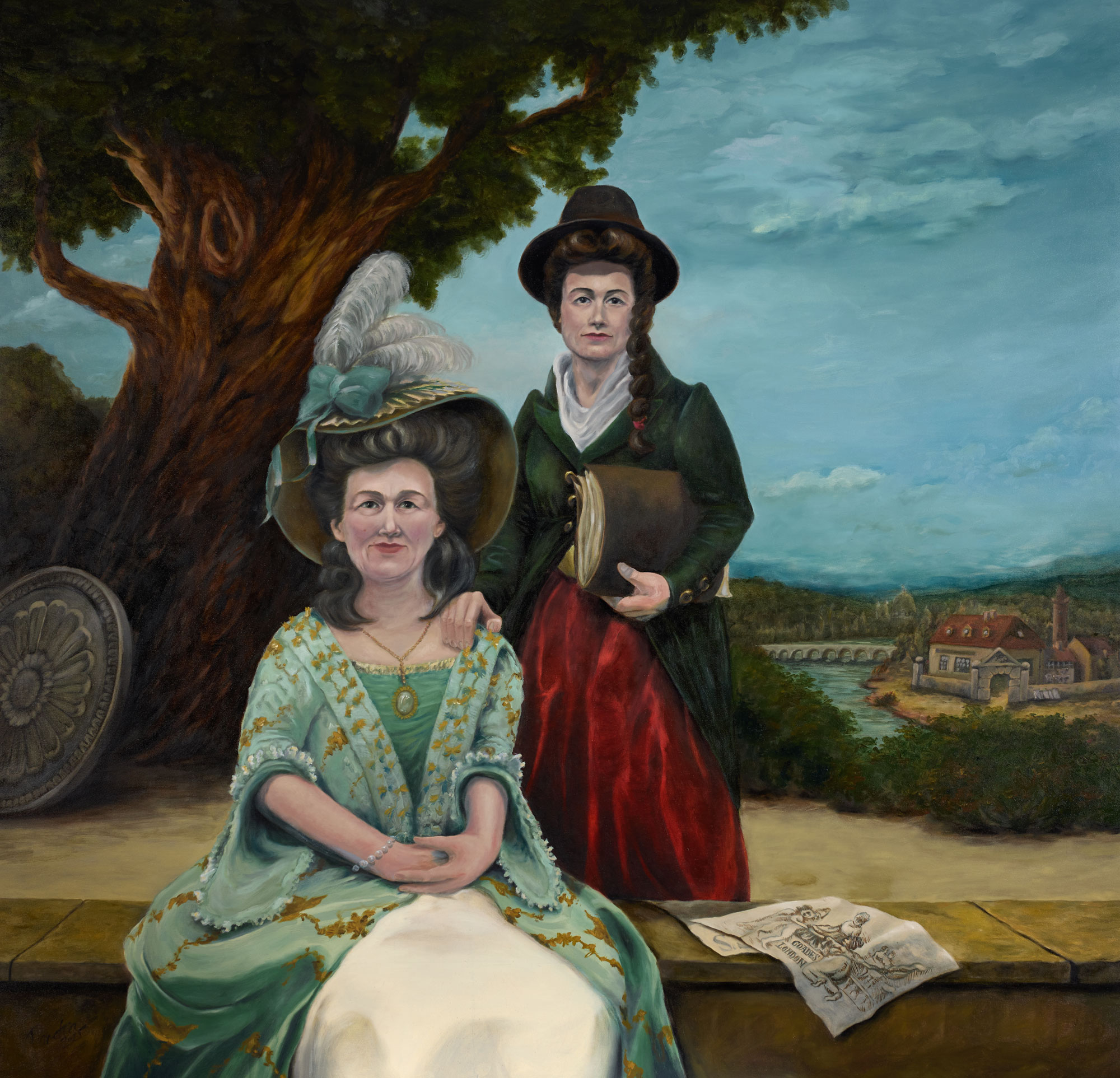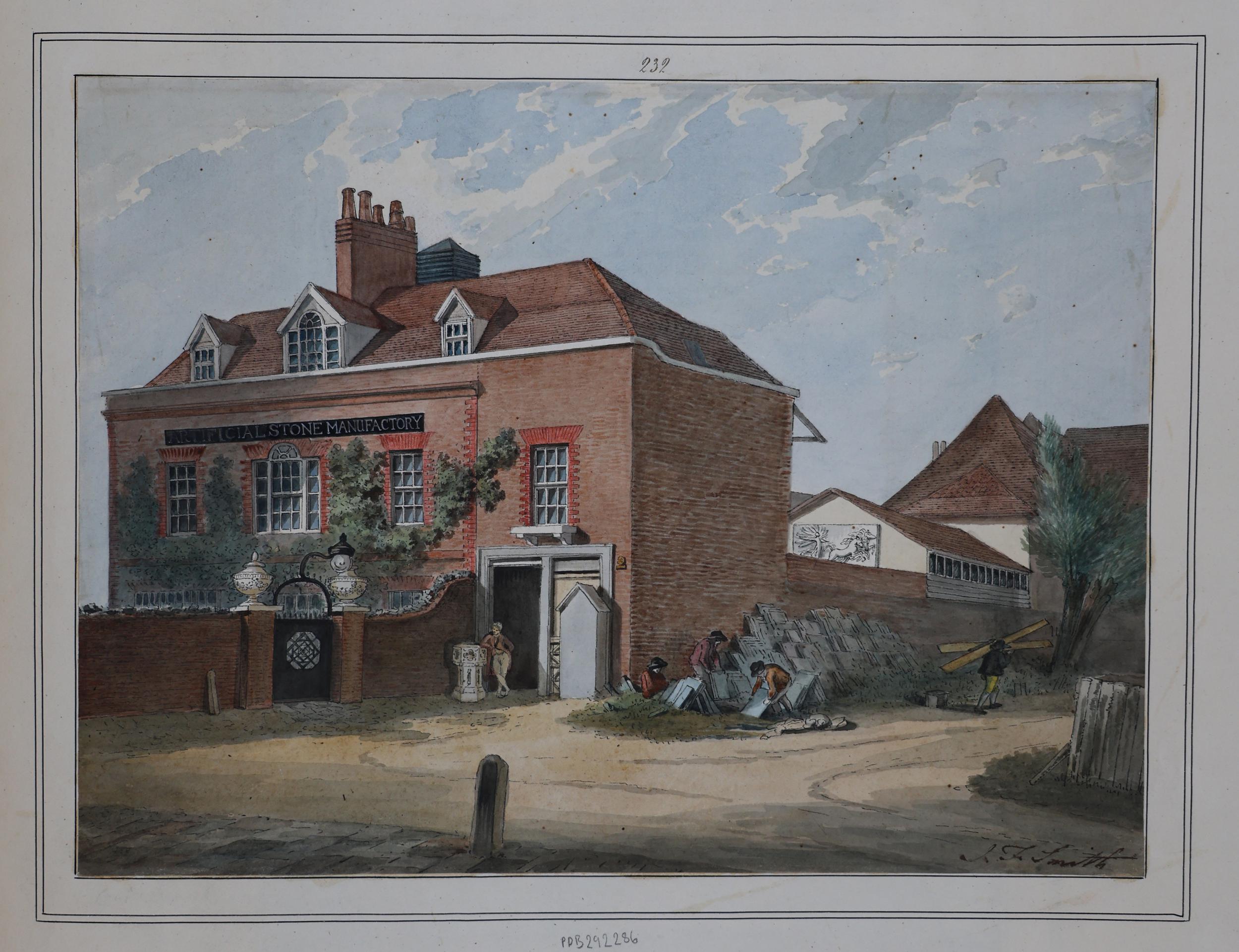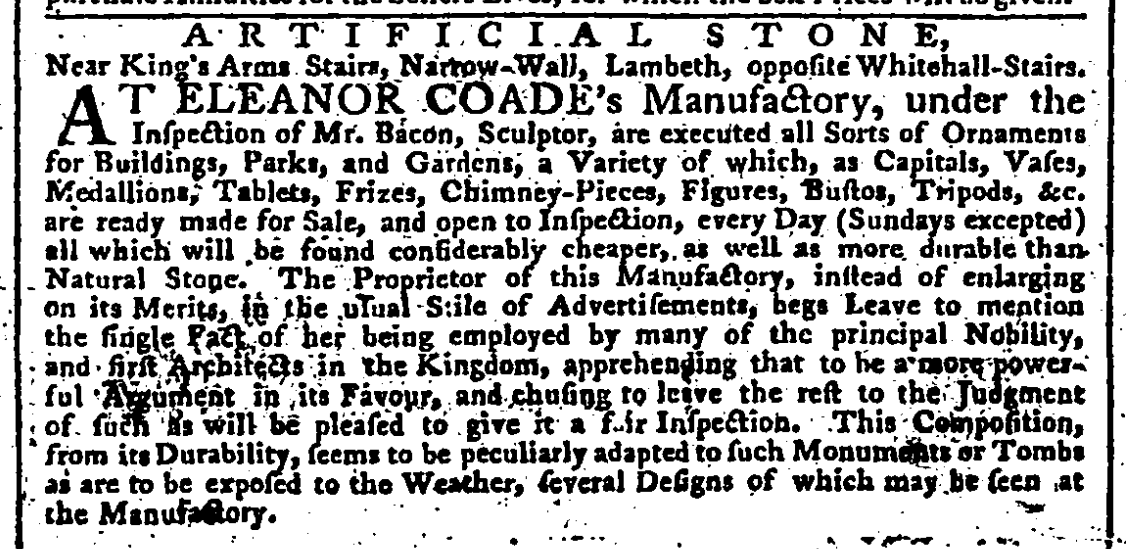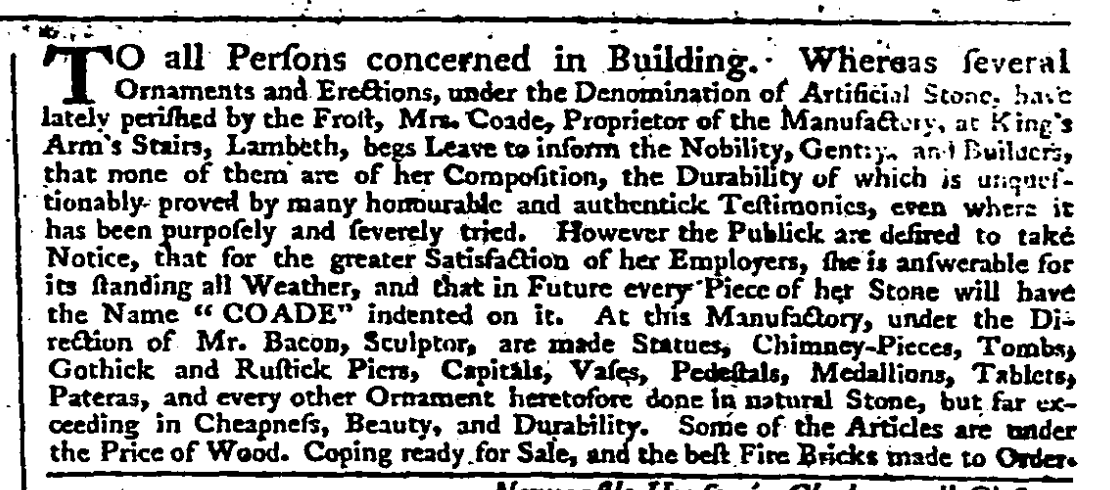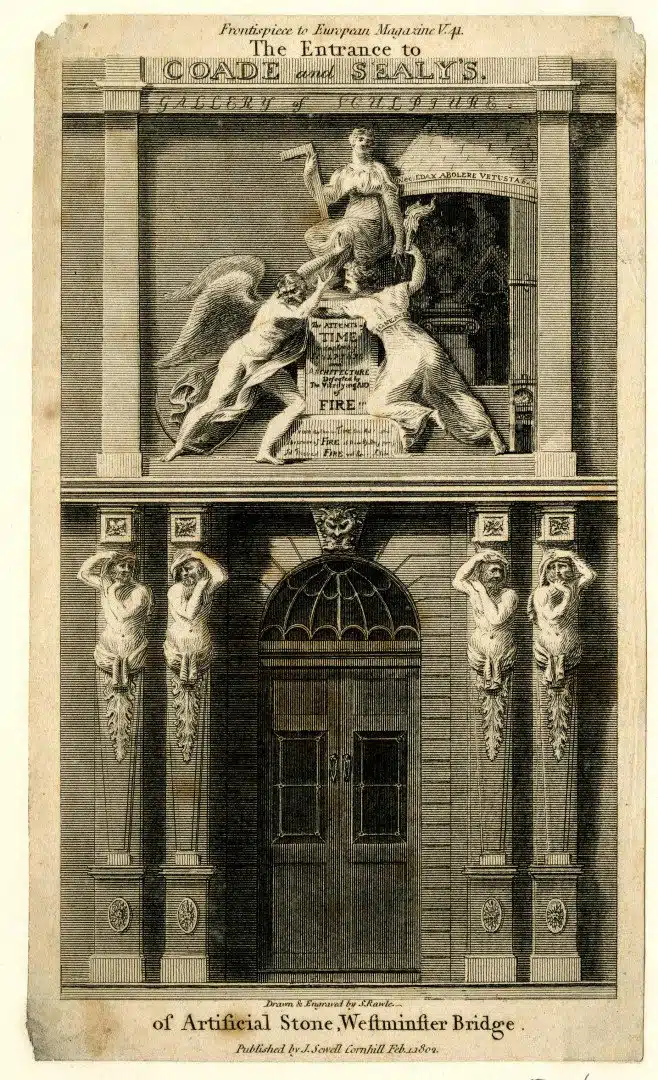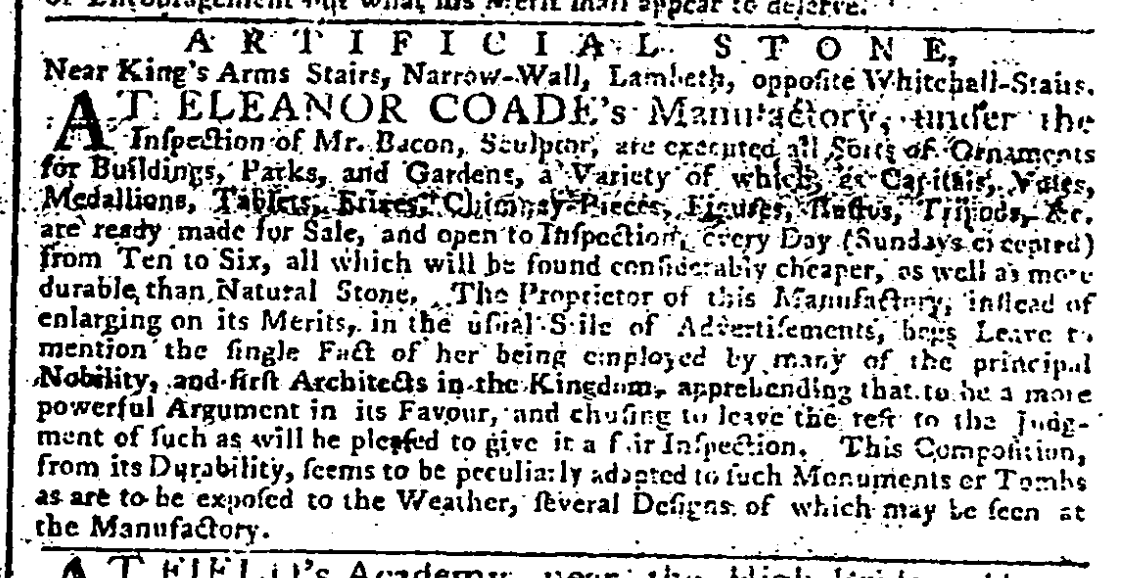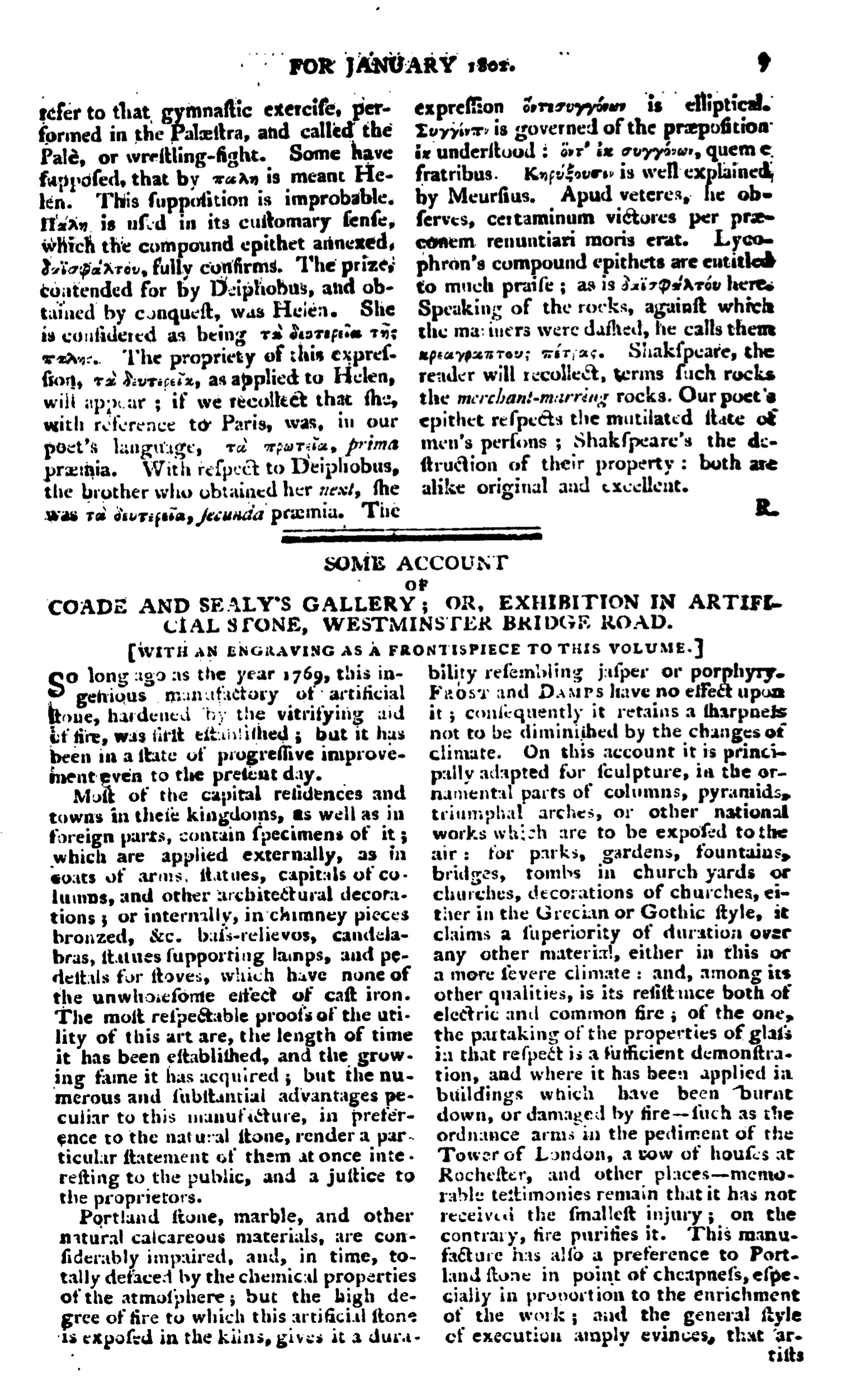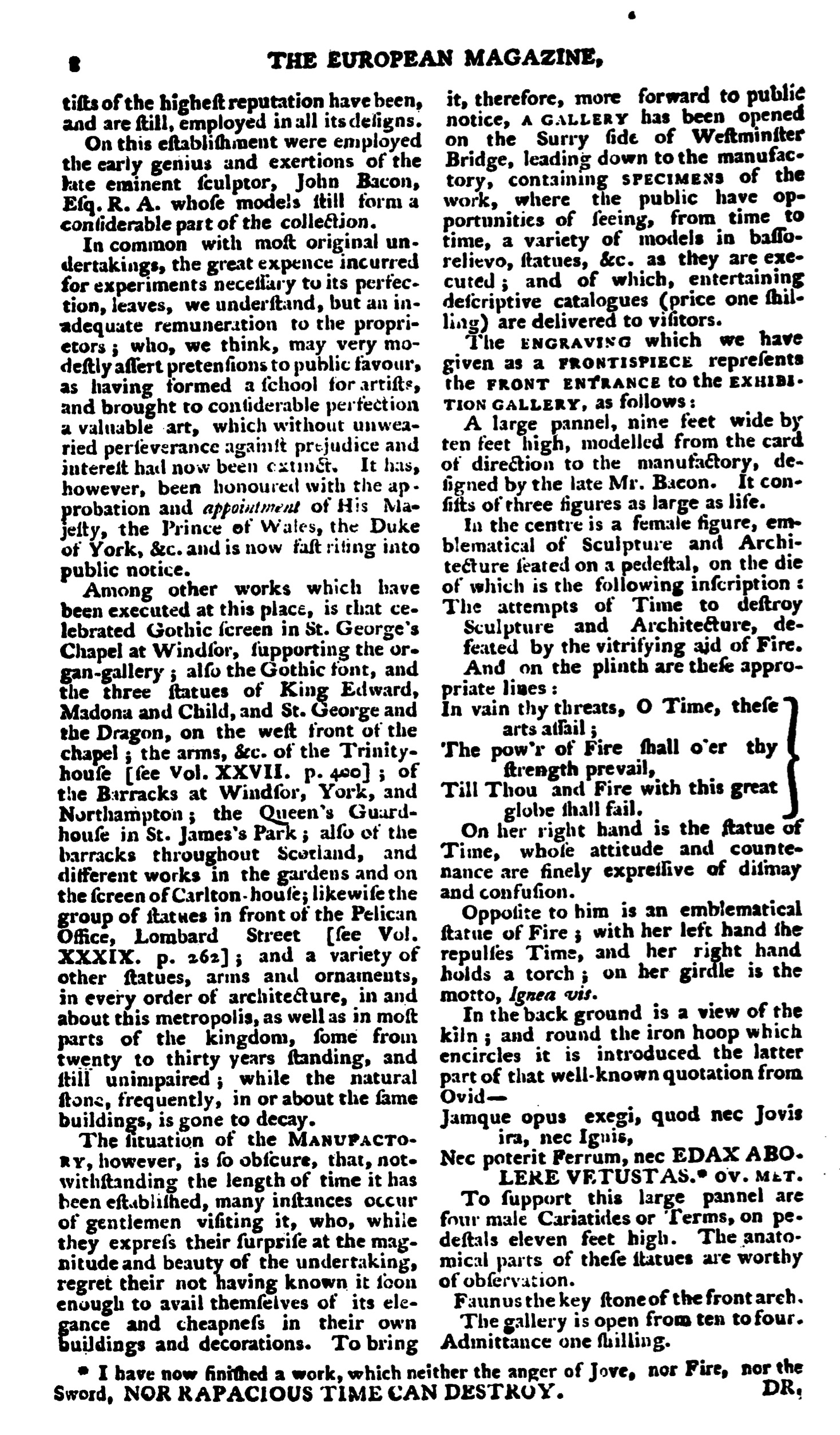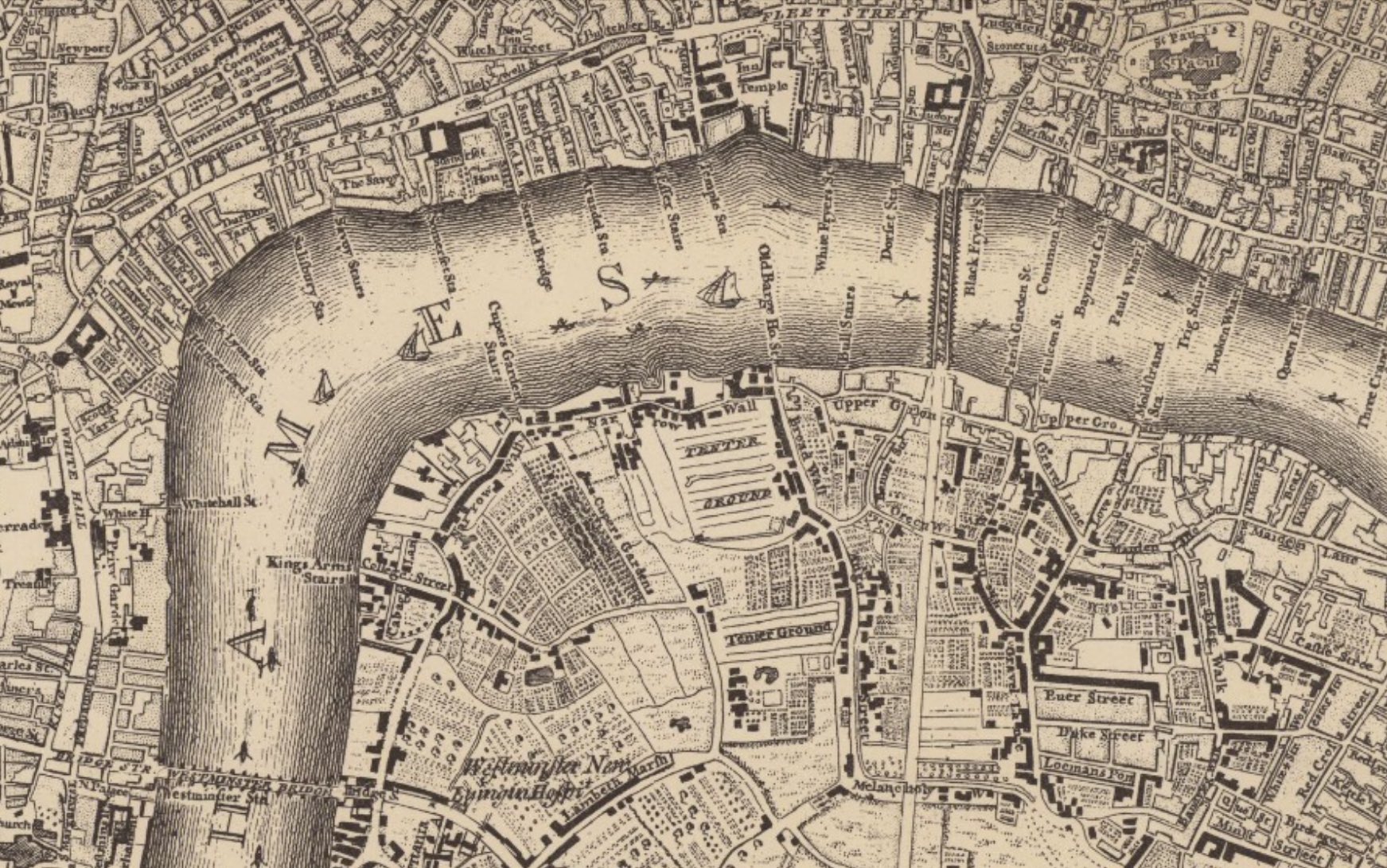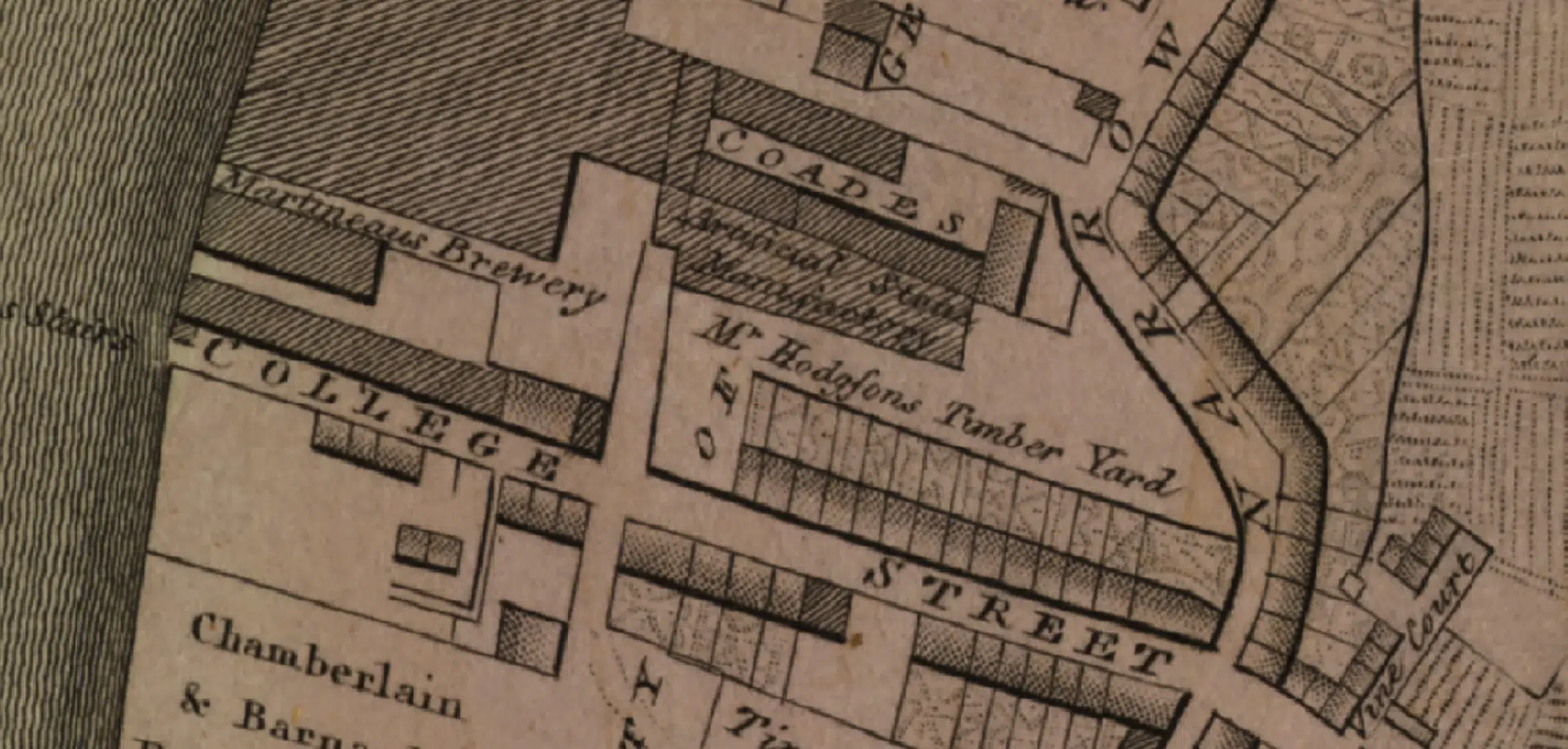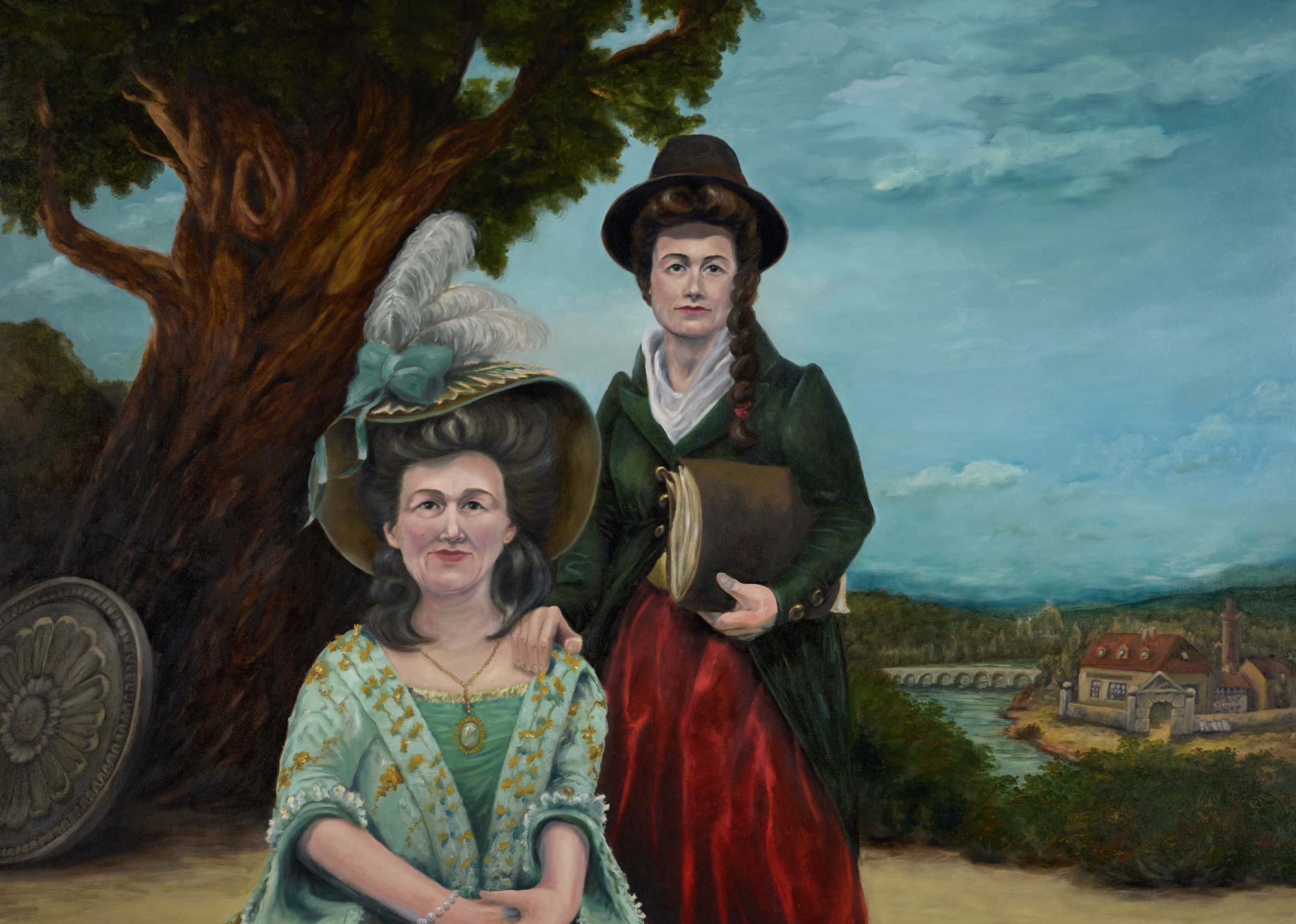
Eleanor + Eleanor Coade
Business women in the Georgian Era
Eleanor (Elinor) Coade
* 3. June 1733 (Lyme Regis, England), † 18. November 1821 (London, England)
Eleanor Coade (born Enchmarch) Senior
* ~1709 (England), † ~1796 (London, England)
They came from Exeter and traded wool and linen. When George Coade (husband and father) went bankrupt for a second time (1769) and died leaving nothing to little to his wife Eleanor and his daughters Eleanor (Elinor) and Elizabeth, these women decided to take on a wholly different business: producing artificial stone. The moment was right, their strategy a match and their marketing a blast. Mother and daughter – both named – Eleanor Coade become the owners and managers of the COADE Manufactory for Artificial Stone, the cornerstone in the history of Georgian architecture.
About the Portrait
Two women, two generations, one name that became a legend
At 1.40 m x 1.35 m, this is a large portrait. It is in the tradition of portraits from the period in England when the painters Thomas Gainsborough and Joshua Reynolds were engaged in a fierce competition for artistic precedence. I have adopted a popular composition from this period, in which the sitters stand (or sit) in the foreground, framed by a tree, with an unobstructed view of the landscape in the background. In the landscape lies the London of the time. St Paul's Cathedral is already standing, and on the south bank of the Thames lies the then still village-like district where the factory was located: Lambeth.
I have arranged the two Coade ladies like a married couple: Mother Coade sits on a low stone wall, her daughter's hand rests on her mother's shoulder. While mother Coade is dressed in a richly detailed dress with a large and heavily decorated hat in pastel colours, as was customary around the 1770s, daughter Coade wears a redingote (a kind of riding coat) made of dark, heavy material and an unadorned high black hat, as was fashionable around 1800. On the stone wall lies a piece of paper with a drawing: the cover page of a catalogue of the Coades. An exemplary architectural element made of Coade Stone leans against the tree.
Eleanor Coade (junior) was a marketing genius
She regularly placed adverts, received royal recognition and ensured that her customers could imagine the product in three dimensions:
"Mrs Coade was interested in interior decoration, and anxious to find ways of using her product for the embellishment of dining-rooms, halls and saloons. In the handbook describing the exhibits in Coade's Gallery/ her showroom near the site of County Hall, she offered to make scale models of rooms showing Coade statues, torcheres, plaques, chimney-pieces etc. in situ, so that the customer could get a three-dimensional idea of a scheme." (Alison Kelly: 1974)
The History of the Coade Stone Manufactory
Mother and daughter take over the management of a manufactory for artificial stone, which a Mr Daniel Pincot had previously run alone but with small success.
The talented young sculptor John Bacon, who had previously been employed by Pincot, wins a prestigious prize for his artistic achievements: the gold medal of the newly founded Royal Academy, of which he will be one of the first associates from 1770. Bacon's skills and reputation give the designs from Coade Stone a high level of artistic credibility - from which the Coade name later benefits.
Eleanor Coade declares in a public advert in September 1771 that Daniel Pincot no longer has any power of representation. A few days later, she publishes another advert in which Daniel Pincot officially resigns from the management. It seems he had earned her fury when going about some business decisions on his own. She wasn't amused at all.
Up to this point, Mother Eleanor Coade still appears in the Coade Stone books. She is now around 65 years old.
Daughter Eleanor Coade begins to present her own designs in the Society of Artists every year (until 1778 and again in 1780) and regularly places advertisements in London's newspapers, promoting her stone as "considerably cheaper" and "more durable" than natural stone.
Previously, the stone was called ‘Lithodipyra’, Greek for stone that is fired twice. The renaming is publicised in an advertisement: From now on, all workpieces leaving the factory are indented with "COADE".
The catalogue contains no fewer than 788 designs. Customers can also have individual customisations made - something that is popular today under the term ‘custom design’.
Mother Coade dies at the advanced age of 87 or 88. She does not receive an obituary, which is why it can be assumed that the name ‘Coade’ is now only associated with her daughter Eleanor Coade Junior.
Sculptor and artistic supervisor John Bacon dies. Eleanor Coade brings her cousin John Sealy into the company. He also brings a breath of fresh air. Together they open a gallery - or showroom - on Westminster Bridge Road, which is more convenient and easier for the well-heeled clientele to visit than the factory on the rough terrain between factories and breweries in Lambeth. A separate showroom catalogue is printed; the last page states when the showroom opens and how orders are taken.
In 1810, a grateful nation chose Coade Manufactory to execute their Nelson Monument in King William Court at Greenwich Hospital. Meanwhile COADE Stone already held the royal appointment of King George III and King George IV.
After Sealy's death, Eleanor Coade brings her cousin by marriage William Croggan (Croggon) into the company. She is now 80 years old.
At the age of 89, Eleanor Coade dies and leaves a fortune to family members and individual married women, with the condition that this money should be at the personal and free disposal of these women.
With the death of King George IV in 1830, the Georgian Era ends – and with it the Coade Stone's success under the management of William Croggan.
Historical Material
Research into the COADEs was largely driven by Alison Kelly (1913-2016); some parts of the story remain obscure, such as whether mother or daughter initiated the factory purchase in 1769. Here are some originals from the time.
(click on the image to enlarge and read more)


